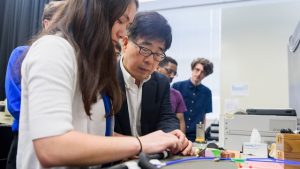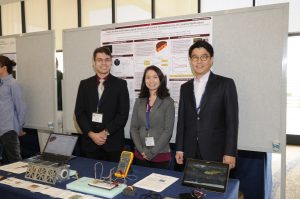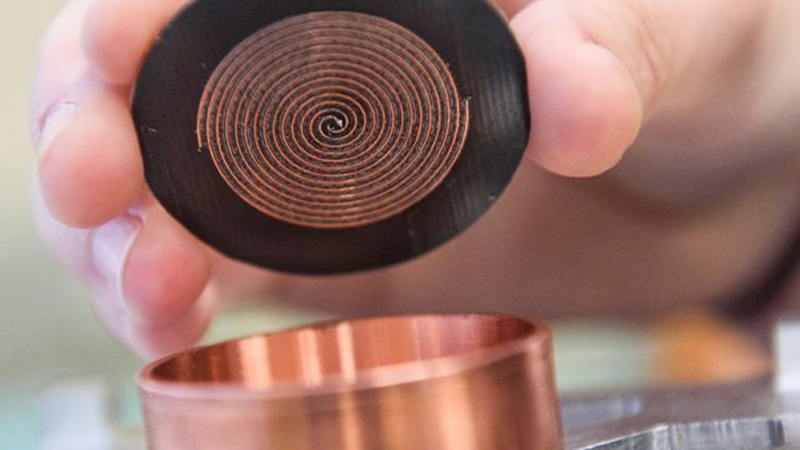
TUSCALOOSA, Ala. — A team of engineering students at The University of Alabama placed first in an international contest to design better antennas for small satellites, called CubeSats.
“It is incredibly exciting for the team to have won this contest, competing against more than 30 teams from around the world,” said Dr. Yang-Ki Hong, team adviser and the E. A. “Larry” Drummond Endowed Professor of Electrical and Computer Engineering in the UA College of Engineering.
“Ultimately, the team achieved first place due to the novelty of their design and multidisciplinary approaches.”
The UA team, made of up three undergraduate students and two graduate students in Hong’s lab, was one of six finalists in the Student Antenna Design Contest, hosted by the Antennas and Propagation Society of IEEE, or IEEE AP-S, the world’s largest technical professional organization dedicated to advancing technology.
For the contest, the students submitted a final report, made a demonstration video, and traveled to a conference in San Diego, California, to present the project to a panel of judges.
CubeSats are miniature, inexpensive satellites put into orbit for research purposes, often designed and used by education and nonprofit institutions. They mostly hitch rides on other missions.
As a secondary payload, they drop into a low-Earth orbit without the ability to move. They eventually fall back to Earth and disintegrate in the atmosphere after completing their research purpose.
Sometimes, however, CubeSats fail before their mission is complete. About half of those failures come from loss of contact with the CubeSats and the ground station, according to the proposal from the UA team.
Antennas on CubeSats must be small, light and operate on less power than antennas on bigger satellites, yet still communicate with the ground.

The UA students proposed introducing a flat, spiral antenna that can be fixed to the satellite without the need for mechanical deployment, which can introduce the chance of mechanical failure.
Although flat antennas have been on CubeSats before, they have not achieved sufficient circular polarization, meaning they do not have enough energy to communicate with the ground station. The UA students proposed to solve that issue with their antenna design.
The design met the specifications of the contest and should be able to communicate up to 620 miles. Importantly, the antenna can be mounted anywhere on the satellite and still communicate.
“Apart from the technical achievement, from the preparation to the completion of the project, the team has been well organized and showed great team work,” Hong said.
The team was invited to submit an article for the IEEE Antennas & Propagation Magazine, and plans to seek funding for continued work.
The team includes:
- Woncheol Lee, a graduate student from Daegu City, South Korea.
- Nikolaus Luhrs, a graduate student from Orangevale, California.
- Katelyn Isbell, an undergraduate student in electrical and computer engineering from Chesapeake, Virginia.
- Peyton Morris, an undergraduate student in electrical and computer engineering from Memphis, Tennessee.
- Cristion Oliphant-Jerry, an undergraduate student in aerospace engineering and mechanics from Columbia, Maryland.
Contact
Adam Jones, UA communications, 205-348-4328, adam.jones@ua.edu
